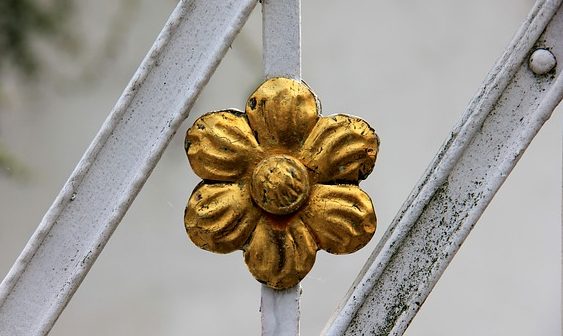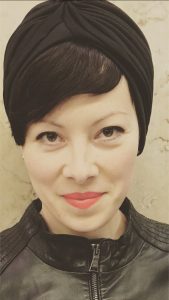Words to inspire the future the next generation desires and creates.
My mom used to say “each time you go through fire, like gold, you become more pure.” She would say that to me after another encounter of challenges in my young adult life, whether from a friendship falling out, another racist or objectifying remark, or the influx of competing demands — belonging versus being the one who stood out.
She would say that sometimes you have to get burned several times to become that shiny version of yourself — strong, flexible, wise.
When I was a teenager, my desired future was to leave a prison developed by society. Under the haze of the New Jersey hot summers where I grew up, the elements of sexism and racism and the power imbalance as they intersect were so suffocating and pervasive you could literally feel the oppression pushing against your skin. As a mixed race young person, the odd sensation of privilege adding to those elements at intermittent moments was both bizarre and exhilarating. Like some kind of weightlessness that arrived to alleviate the heaviness of oppression as if it were a passing weather pattern within the social sphere. Passing — as if Nella Larsen’s concept and a new astrophysics/social phenomenon merged together that Octavia Butler would have surely discovered and written about.
As a teenager, I would often wonder, “How many times do I have to be burned to turn into gold? How many times does the fire need to touch us — me, my mom, my family?”
It turns out that there’s fire everywhere — the ones we all experience as individuals, the literal fires that swallow us whole, and those that we battle everyday in the streets, from our eyes intaking what we see — messages, media, stories, singular representation — and those that we experience in each institution we participate in. I recognized the few adults in my life, whether a teacher or passing mentor, who made me inquire, dig or think deeper, discover new modalities to explore.
Once I had graduated high school and then college, I re-connected to a desire to be bold and free. I explored, challenged myself, connected with different communities and experiences. I gravitated towards camaraderie with other women and music as a form of creation and as a means to discover through touring and traveling. Without a smartphone to document what I witnessed or experienced, or even the directions we needed to get to the next destination, I had to simply take in the reactions of people in small towns or urban cities who saw radical grrls traveling together, taking to their instruments or pumping gas at a station. I witnessed the unpleasant discomfort that crept on the faces of the locals — taking in difference, unleashed, desired, and threatened. I had the fortune of capturing some of that observation on radio during phone interviews from the van.
After touring, I became more involved in my career and took to creating spaces that empower young women and young adults, whether through initiatives like the rock camp for girls and, specifically, the youth media field, where adults had a deep intention to provide to the next generation what they didn’t have — a platform to be recognized, heard, to explore your identity and create media to represent your community. Media was a tool for that expression and discovery, which then aligned with career possibilities as a growing digital age and tech sector requires both these relevant hard skills and social soft skills in leadership, agency and risk-taking.
Youth media is a unique space for social impact in predominantly underrepresented communities, creating a subculture that can examine those very dynamics of power, race, class, gender, identity. It didn’t necessarily offer that kind of tool kit for school-based learning or for the dominant culture at large, and too often it fell under the radar of any major media outlet to capture as the spotlight to uncover. Practitioners and leaders were too busy being hands on, on the ground, and all-too-often, in conflict with one another due to the very limited resources they had to work with to keep the lights on, the media programs robust and up-to-date; and, to keep the funders engaged with the high impact and quality but limited number of teens served. To memory, no one considered bringing on a public relations and marketing expert to their organization, network, or collaboration. Turns out, impacting the lives of young people takes a lot of ongoing, consistent, real effort beyond and outside of schools, competing demands, changing moods and shifting priorities. We all had this interesting dynamic of being an advocate, inspiring rapid growth of teens in our care, being captivated by their challenges and watching them, more often than not, surmount them. I’ll never forget an 8-year-old tell me after a workshop “thank you for teaching me about gender dichotomies” and seeing the expression of woke faces. Makes you want to take every crack you can at dismantling those prison walls.
Now in my tenth year of being involved with the youth media world, it is time to see how to turn the camera on the field, its best practices, and how technology can provide a much more widely accessible platform for youth leadership, engagement, inquiry and media creation. Getting their active participation and peer-to-peer connection, with components to build the confidence and ability of their teachers, has the possibility to transform learning. That’s something the team is designing at my current outfit we hope to launch in 2018.
Youth media programs continue to weather significant change — in the digital age, from where the resources come from, the angles to which the initiative is re-aligned. Youth media is still relevant because young people still don’t have that platform to create and produce the media and representation they want — to practice analyzing, resisting, re-designing messages of inequity, power imbalance, social norms. There’s a hunger to have that space, even when it isn’t quite conscious. John Hughes brought the eighties the brat pack. Those dynamics still exist today and we have a President that I hope will spur the change we crave by the leadership of an engaged, woke, and radical next generation. A generation that doesn’t just pass, consume, belong. A generation that creates the culture and future it desires, which in fact, is the very future we need and that has to stand out, no matter how many times it gets burned.
About the Author
Ingrid Hu Dahl is the Director, Service Design Education at Capital One, scaling cutting edge design tools to impact human-centered services. Dahl was previously the Managing Director of KQED’s Learning initiative where she oversaw the development of products, platforms and content. And prior to KQED, Dahl was the Senior Director of Education and Field Building at Bay Area Video Coalition where she designed programs to bridge underrepresented young professionals to the tech sector from an innovation and social impact lens. Dahl is a founding member of the Bay Area Youth Media Network and a participating partner that formed The Mix — a creative media lab for teens — featured at the San Francisco Public Library. Spurred by a grant from the California Endowment she developed a rapid response youth advocacy program that launched in San Francisco and San Diego for teen journalists and media producers, one of several innovative partnerships that followed including web native filmmaking and Popcorn.js with Mozilla Foundation, an all-girl game design series with Zynga.org, a tech immersive fellowship program funded by the National Science Foundation, and a remix game and coding program for teens supported by the National Endowment for the Arts. Formerly a Program Officer of Youth Media and Editor-in-Chief of Youth Media Reporter at the Academy for Educational Development, Dahl has extensive knowledge of the youth media field as an intermediary, leading a National Youth Media Summit in 2009 and the Grantmakers in Film + Electronic Media’s Investing in Youth Media funder briefing. Prior to leaving New York she launched a middle grade “Youth Create Media Project” throughout the boroughs in New York City and Newark, NJ; and, helped found the Willie Mae Rock Camp for Girls (Brooklyn, NY) where she taught girls empowerment through music, identity workshops and collaboration. She has published articles on the youth media field, tech and education, leadership and case study results. Dahl lectures nationally and internationally, has taught courses at Rutgers University on imagery and culture, designed and facilitated leadership workshops, and created a public speaking Riot Grrrl course at the Barnard Center for Research on Women. A musician for over 15 years, Dahl has toured the nation and plays synth, bass and guitar. Dahl is a board member of the Bay Area Girls Rock Camp, participates in the diversity and tech movement, and is a TEDx speaker.


